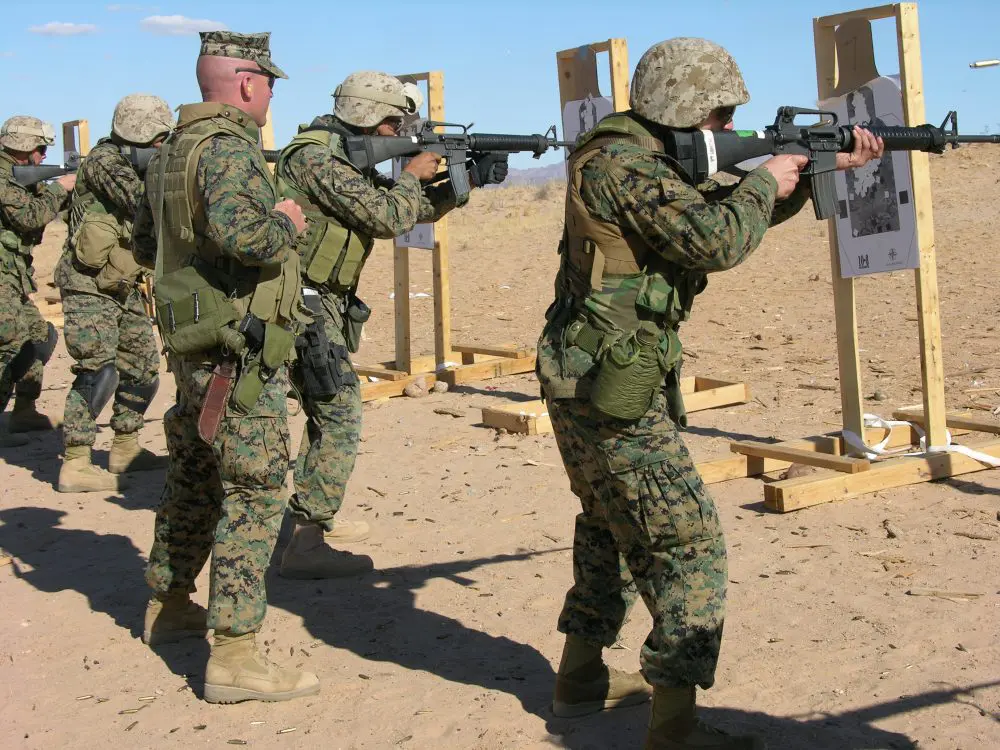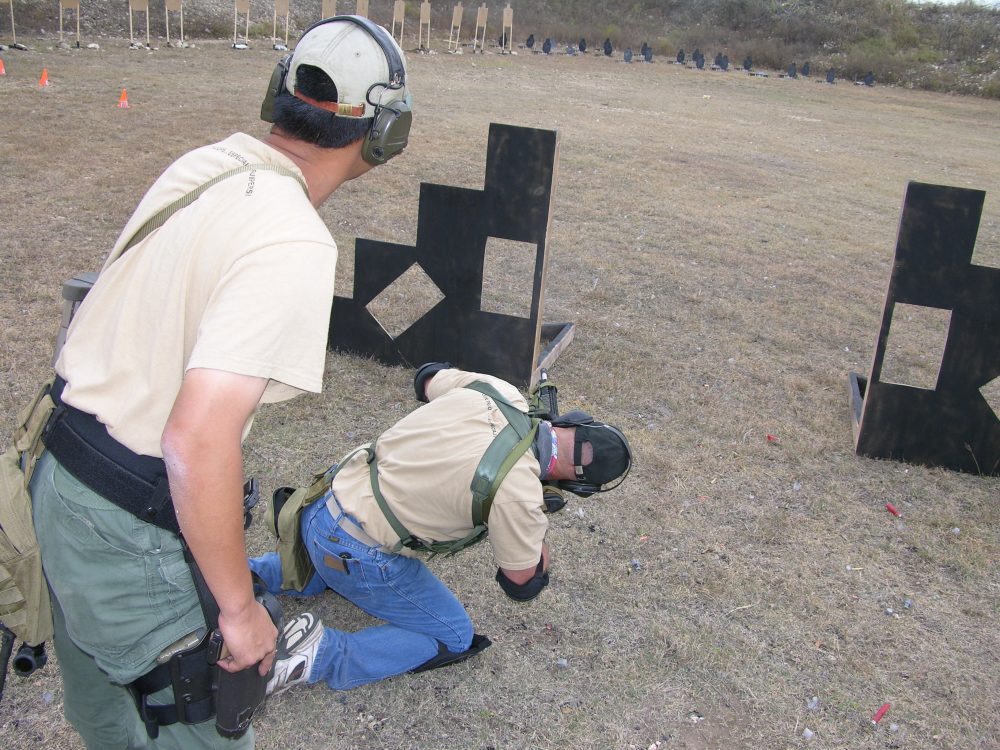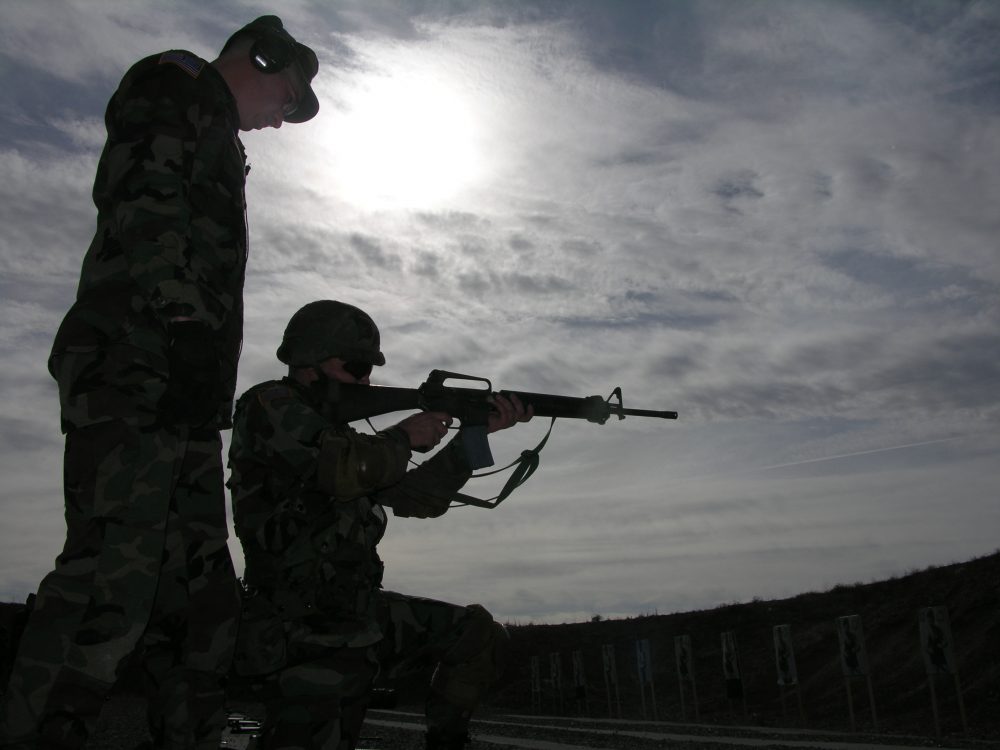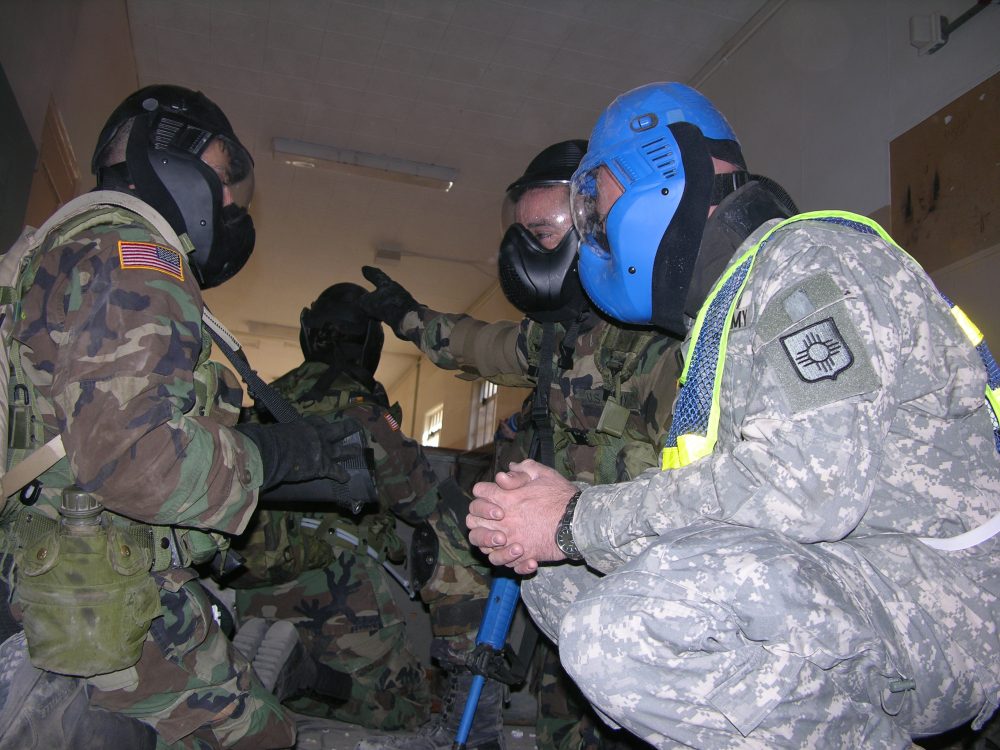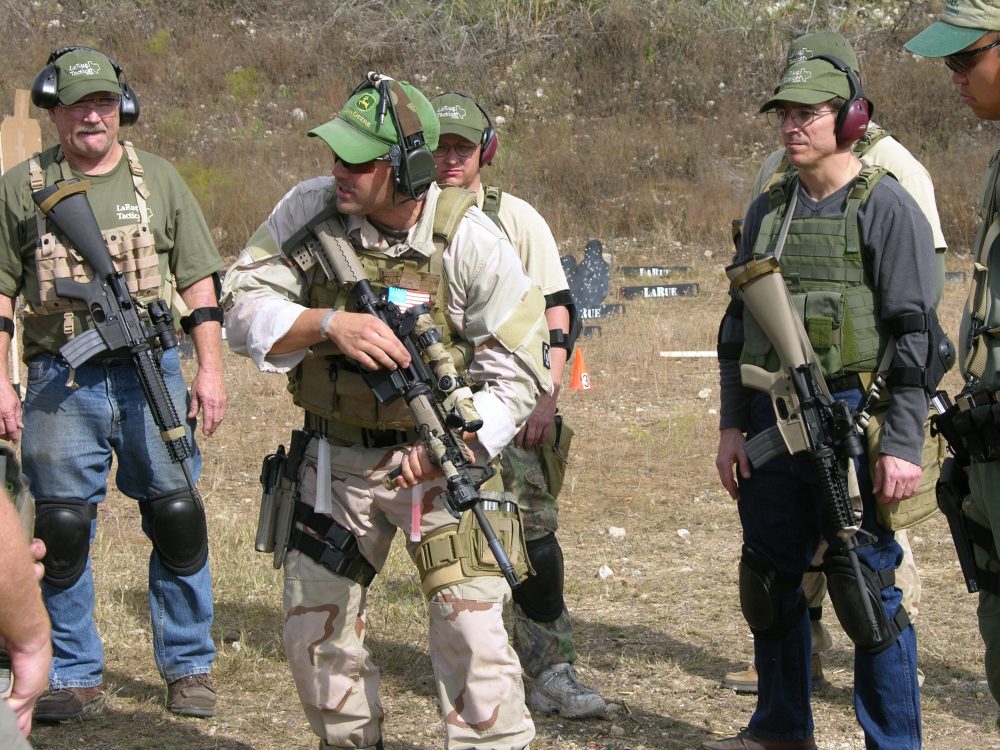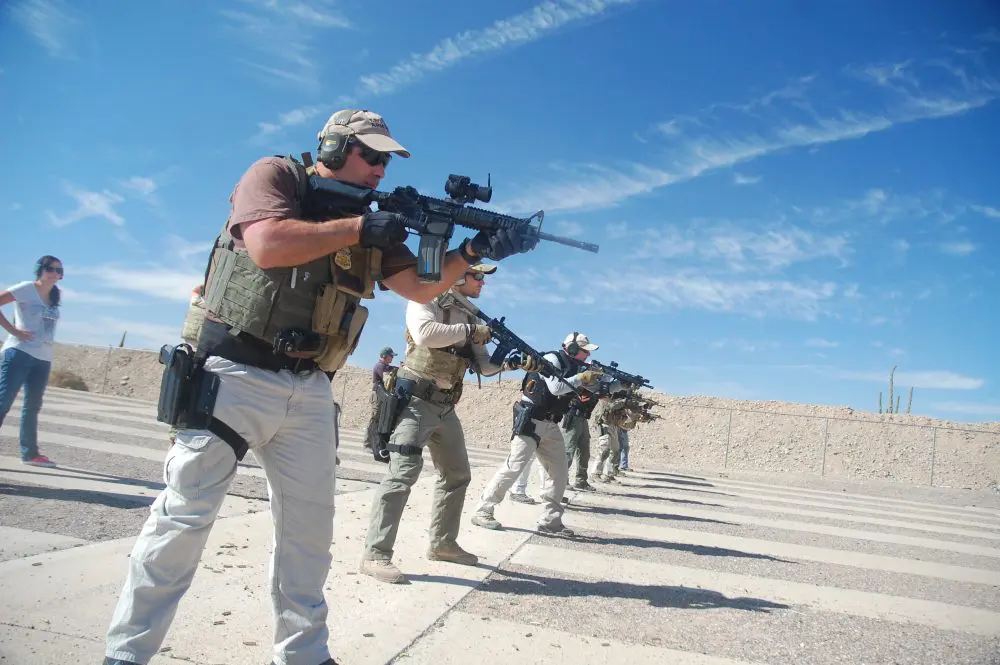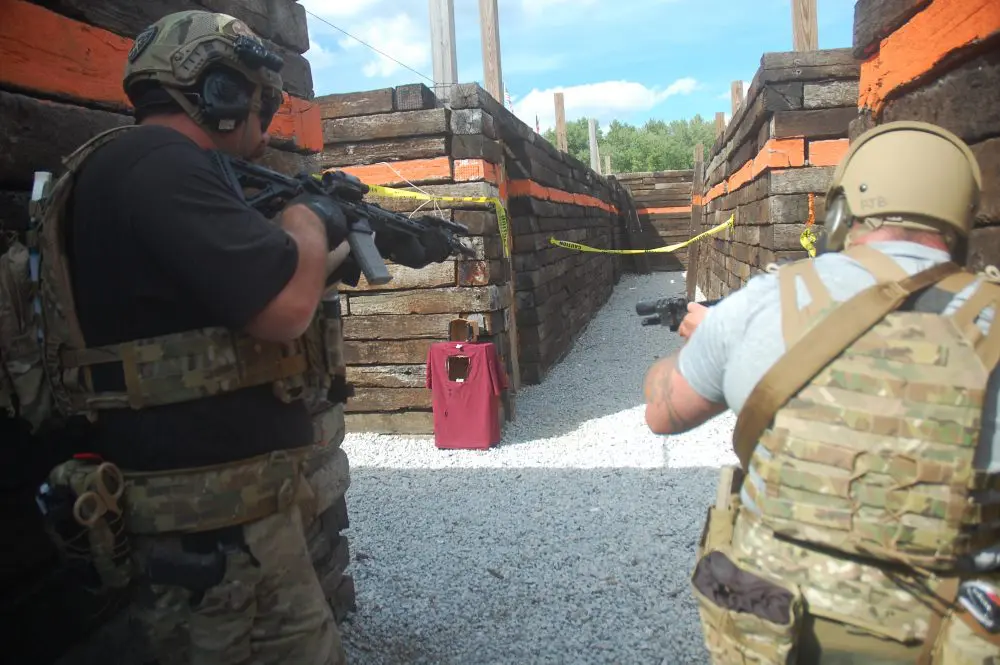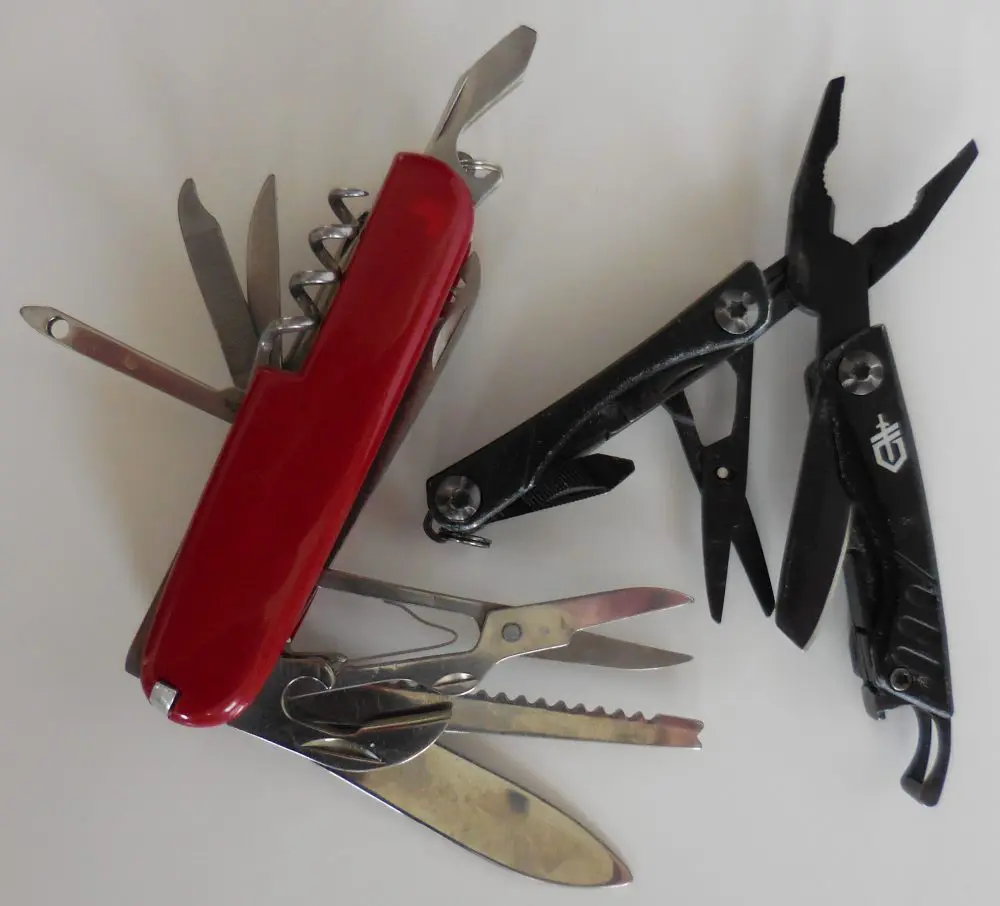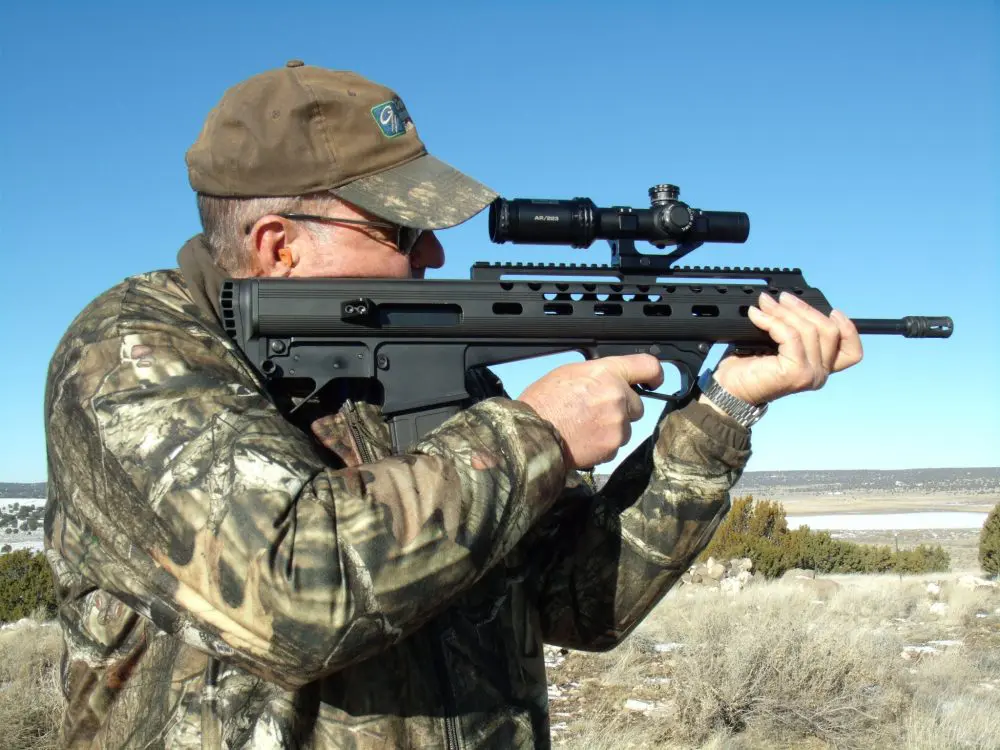No one is born being able to shoot, and those described as being naturally instinctive shooters are, in reality, just very talented people who pay attention to basics. Wild Bill Hickock did not exit the birth canal as a proficient killer. That he had the mean gene imbedded is without question. However, the mechanics necessary to carry out the physical act of taking someone’s life had to be learned.
What follows isn’t just about shooting—though that is the end state—but fighting. Keep this in mind as we stroll through the pages.
For some, training is not a priority. The reasons for not attending training are many, but they can vary from financial issues to egos that won’t permit one to actually perform in front of others—the dreaded peer pressure thing. For some who are required to be armed, a common feeling is that they receive all of the training necessary at work; if more were necessary, it is up to the organization to provide it.
Lecture is first step in passing on information. “School circle” provides instructor with opportunity for rapid dissemination of information.
One oft-spouted refrain among some is that the Constitution does not require it, therefore they will smugly abstain. Running neck-and-neck with that is that training is not necessary—we have been shooting for a long time/all of our life, and know what to do and how to do it when the time comes.I once had a friend who was a very talented gunsmith on Long Island, New York. Ron was a medically retired NYTPD cop and a fine machinist. He built, repaired or worked on many of my guns and I shared many meals and more glasses of cognac with him than I can remember. For years Ron turned down my offers for training, but finally acquiesced.
Ron was a fair shooter, but shooting isn’t fighting. He would probably have been able to hit an opponent—if the bad guy managed to stand still long enough for my friend to actually get the 1911 out of the holster, remove the safety, align the sights and press the trigger. He didn’t process the information presented and instead fought it all the way. He stated, “I don’t need any of the fancy stuff. I just need to be able to hit him.”
Ron was counting on having time to prepare, having a single opponent stationary and unresponsive—and having a large dose of luck.
Ron’s luck ran out one night when he fell asleep at the kitchen table while cooking dinner. The food on the stove burned and led to a fire that destroyed his house, shop and ultimately, him. I miss him.
Feedback and critique are two important parts of instruction. Here Mike Heuser (left) and JK (right) discuss performance after a shooting on the move drill at Memphis, TN PD range.
One other smaller—but extremely vocal—group believes only in self training. Their doctrine, such as it may be, can be based on commercial videos, Internet forums, magazine articles, conversations with others or the old standby—movies and television.
The mindset of the individual is the major issue in training. While a great many of those in jobs that require the carrying of a gun—military, cops, ICs, security guards and such—receive only very rudimentary training, some seek additional training to further enhance their skill sets. Some do this on their own nickel, and often are not sanctioned by their employers (the “Not Invented Here Syndrome”). Others who own guns but do not need them professionally will never have, nor will they ever seek, any formal training. These may include hunters, plinkers, hobbyists and unfortunately, even those who may possess or carry for defensive purposes.
Regardless of what your particular reason for owning a firearm is, you need to have some training—no matter how basic—in the care and handling of the weapon. This training may be presented by local clubs or larger organizations, and can range from very basic to much more. If defensive use of a weapon is on your radar, you need more training—a lot more.Man learns from a variety of inputs, and the military analogy of crawl, walk, run is extremely appropriate. Proper formal training should include lectures, demonstration of a properly applied technique and then multiple repetitions that are scrutinized and critiqued by a qualified instructor. Firearms skills (like jumping, diving, climbing and other high-risk endeavors) are learned more slowly than other skills such as perhaps cooking. Part of this equation is that, when you press the trigger, noise, recoil and a projectile heading downrange are the results. Man does not like loud noises—especially when they are occurring at the end of your arms.
An instructor has to be close enough to immediately influence an issue. Tim Lau observes student at EAG Carbine class at Larue Tactical. Mark Larue, owner of Larue Tactical, wanted to ensure that his workers were dialed into what the end users of Larue Tactical products actually do.
How many repetitions are required before that neural pathway from the brain housing group to your paws is sufficiently hard wired that you can correctly perform a particular action without an over-abundance of conscious thought (the so-called “conscious competence” part of conditions of achievement) is subject to interpretation and skewed by science. However, the number may be in the thousands—the many thousands.
Contrary to popular mythology, it is not muscle memory here—it is ensuring that your brain can send the proper signals to those parts of your body that perform the functions that allow you to win the fight.
Training ratchets up as you acquire skill sets. This may be in the form of tighter time constraints, smaller targets, movement, multiple targets, reloading, malfunction clearance and transitioning to a secondary weapon. This initial training should be a minimum of three days. Five days would be better in order to assimilate the training without overloading your memory banks. For some this initial training may be for a significantly longer time frame—weeks instead of days.
Three to five-day classes are about what the average earth person can reasonably expect to attend. Time is often limited due to day jobs, families, etc.
For many, training is an abstract thing, used to fill time or test skills. For others, it is deadly serious and the application of this training is in the near term. This class was conducted for the Military Police Platoon of Marine Wing Support Squadron 373. Just before Christmas, a HUMM-V operated by this platoon was hit, with three KIA and two WIA. One of the WIAs is the instructor in this picture, an extremely knowledgable and professional Gunnery Sergeant. He has vision in his eyes today only because his Oakley M Frames performed as advertised. Most of his face was burned, but the Oakley eyepro— though destroyed in the attack—kept his eyes safe. The images of his face, with burns covering everything except the white around his eyes, are proof positive that quality gear is essential. We owe our men and women in uniform a debt of gratitude that can never be repaid.
As skills improve, tactics, force-on-force and live-fire scenarios are integrated. Clearly this level of training is for those directly involved in a job that requires a higher level of expertise, though it is attractive to many enthusiasts as well.
This level of training may run a minimum of five days to several months, dependent on your particular job title, MOS or vocation, or disposable income.Once a solid base is established, regularly scheduled sustainment training is added to the mix. The intervals and length of training are of course dependent on a great many external and often conflicting influences.
Enter self-training.
There exists a major problem with self-training, and that is the lack of feedback.
In conventional instruction, a trainer will first lecture and then demonstrate how a particular skill set is performed. The student will then perform the task several times, with the trainer providing corrections as necessary. Repetition is the mother of skill, and these repetitions should be run until the student can perform them on command. This immediate feedback and correction moves the training along at a relatively rapid rate.
Those who believe that formal training is neither necessary nor useful may often go to a range/field/quarry and blast off X amount of rounds. Happy that they spent the day shooting, they pack up and return to their domicile, content that they will be able to dispose of hordes of zombies should the cemeteries evict the recently departed.
Maybe not.
Instructor with New Mexico National Guard Combined Arms Training Company monitors progress of student at Santa Fe Training Center.
Going to a range by yourself or in the company of one or more who are also shooting may mean that no one will be watching another shooter’s technique. Or, those who may casually watch are not able to properly diagnose another shooter’s problem. Two blind men will see about the same as two equally inept people bump firing into a lake. The result here is that those projectiles zinging their way downrange may realistically amount to nothing more than ballistic masturbation.
Let’s say that you do have a plan of sorts. Nothing written down on paper, just something in your mind that you would like to do. That’s training, right? Actually, no—it’s not.
The problem with self-training, “practicing” or plinking is pretty simple: you only do those things that you are good at. In other words, you are staying well within your previously defined comfort zone. You are reinforcing those things that you are good at, and therefore those things that you like.
Don’t believe me? OK, when was the last time you did a Type 3 Malfunction clearance on your own? Can’t remember? Ever? How about ever doing any malfunction clearance drills on your own?
There is probably a reason for that—they are a pain in the neck to do properly. And they are out of your comfort zone.
Instructor from New Mexico National Guard Combined Arms Training Company (in blue Sim’s mask) observes as Platoon Commander and Platoon Sergeant confer during MOUT operation. Objective was cellblock in New Mexico State Penitentiary in Santa Fe. A number of instructors move with the assault and command elements and provide hard and concise data for the de-brief. In order for this training to be effective, students have to check their egos at the door.
The Comfort Zone is defined as a temperature range of between 55-70 degrees and 30-55% humidity, at which a naked body can maintain a heat balance without shivering or sweating.
From a training standpoint, the definition is similar. It is when a shooter can perform a technique without sweating, as in “No sweat, I can do this.” The term can be analogous with mediocrity. People who are satisfied with performance at a lower level will never improve. Generally we will improve only when we are pushed to perform at a higher level. That pusher can be a coach, an instructor or especially peers who may have a vested interest in your being able to perform at a much higher level.
I once had a very (as he claimed) experienced competitive shooter in a class. He told me so. He also told everyone else in the class how fast and accurate he was, and how his techniques were superior to all others. On the breaks he opined that the instructors didn’t know what they were talking about (though not to the instructors’ faces). The fact is that he was fast and reasonably accurate—as long as he was within the boundaries of his comfort zone.
However, once he had to leave that warm and fuzzy place in his mind, he completely fell apart. In fact, of the 24 people in the class, who included cops, mil, ICs, pilots, retired gentlemen of leisure and bankers, he was the only one who did not pass the qual course.
This isn’t a slam on competitors, and if the situation were reversed—for example, cops going into an IPSC match— a person of a similar mindset might experience a similar result. Good students adapt to changing situations if they have an open mind and the discipline necessary to learn new techniques.
Another problem with self-training—and which dovetails nicely with the above—is this: the majority of people in our society today lack the discipline and motivation to succeed at self-training. Our society is a feel-good one. Children who can’t make the grade at school are promoted anyway. Self esteem rules, and excelling at anything is often frowned upon. A great many people lack the critical self-analysis to make self-training work. Are you honest enough to truthfully critique yourself? Do you have the knowledge and ability to even attempt to self-correct?
Instructor has to communicate with students on several levels. This includes lectures as well as demonstrations. Demonstration provides visual feedback. Questions can be answered immediately, and doubts resolved. EAG instructor provides demonstration to Larue Tactical workforce. Understanding what end user does makes for more informed employees, and better products for trigger pullers downrange. How many other companies do this?
Does this mean that self-training is always bad? The short answer is a qualified no. For training to be truly effective, one needs to have good initial training that is followed up with regular sustainment training. The operative word here is “regular,” but exactly how regular is subjective. Certainly those operators in the military tasked with special missions train constantly, and firearms are a large part of the equation. Their initial training may last for weeks or months, and the sustainment training is never-ending. Patrol cops may receive minimal training to comply with political correctness and may shoot only a qualifying course yearly to satisfy the lawyers. They may qualify once or more a year, but that may be it. Cops in certain details, such as SWAT, will take that to a higher level, but the quality and quantity of training may be restricted by budgetary constraints, work schedules and fearful, unknowing police administrators. Unfortunately there is seldom sufficient time in a three, five or even ten day class to successfully perform the repetitive skill drills necessary to reach this level of achievement, therefore necessitating regularly scheduled sustainment training.
Sometimes the only alternative is to train by yourself. But how can we do that and maintain training integrity?
The first step is to have a plan. Jason Jones, a former Marine instructor, competitive shooter and civilian weapons trainer for a federal agency, self-trains when it is the main option available.
Jason starts with a plan. That plan may include one or more training objectives, but he will stay with the plan until he has successfully completed it. He believes strongly that running a video camera on a tripod to record the session is invaluable.
Retired Ranger Master Sergeant Jose Gordon is still in the business, and his training issues are similar. There is not always sufficient time to receive sufficient formal sustainment training, and it is up to the individual to make up for that shortfall. Like Jason, Jose believes that self-training requires you to have a plan and then execute the plan.
That plan needs to ensure that the continuity of training is maintained, and to the extent possible, replicate formal sustainment training. Common sense is a priority, and the training should be accomplished with your mission-essential gear. While this is common sense, it is a part of the training protocol that is very often ignored.
From my point of view, lack of equipment integration is right up there with poor weapons manipulation as mortal sins. It is something easily rectified during a self-training session that does not have to include live fire.
How about what some may consider to be the pinnacle of self-training, the so-called “Dry Fire”? I strongly prefer to use the term “Dry Training” as opposed to “Dry Fire,” as there are way too many people who have put rounds into mirrors, televisions, walls and in several cases people when they ignored the basics and conducted this training with a loaded weapon.
Like all training, Dry Training also requires discipline and a plan. It also requires that you have no live ammunition on your person or in the same room with you.
It requires that there are no distractions—TV, tricycle motors and the like. It requires that you have a safe backstop in case you have a moment of cerebral flatulence.
Basement walls and your safe may be considered as viable backstops. Your mirror—unless it is hanging on your safe—is not. The mirror is not a viable target in any event. You may wind up profiling yourself and becoming more concerned with how you look than how you are performing.
Individual Dry Training requires you to be especially switched on, as you may not be on a firing range, but possibly in your house, hotel room, camp site or other place where firing a round is proscribed.
I used to work at a place where “Dry Practice” was mandated. The result was multiple NDs in hotels throughout the area. They instituted a new SOP concerning dry work after class, and Dale Bright—a very switched-on former SEAL—came up with a Kevlar-covered steel plate hosted in a plastic pistol case as a portable backstop. This SOP reduced the number of incidents, and I’m unsure if the portable backstop ever fulfilled its purpose, but it was a very useful piece of gear.
From my perspective, I do not believe that Dry Training during class is either necessary or useful. My classes are moderately high energy, and we see students fading by the second or third day of training. A tired student is also a student who has difficulty processing information. Failure to process information also means someone who can’t function safely on the range.
My preference is that you take a shower, eat a healthy meal, decompress in your favorite way and get a full night’s sleep. Spending rest time doing dry work is, in many circumstances, counter productive.
A good example of doing things wrong, because of lack of discipline, common sense or plain stupidity, is an incident that happened in the high desert several years ago. Two friends finished class, went back to the hotel and conducted their mandated Dry Practice. They then went to dinner. Upon return, one decided to make a practice draw. His friend stated that it was incorrect and drew his pistol to show him how it was done.
The problem here was that they hadn’t switched on to the Dry mode. Both were still hot, having just returned from dinner. Want to guess how this wound up?
The friend made his presentation using his buddy as a backstop and centerpunched him with one round of .45 ACP. The shootee lived long enough to allegedly state, “You killed me.”
This was a tragedy that could (and should) have been avoided, but the spoken word and the fired shot have in common the fact that neither can be recalled.
For some groups, team Dry Training can be exceptionally useful. Just like live-fire training, there has to someone responsible for conducting the training and correcting errors.
There has to be some residual benefit from training—self or otherwise. Without a training plan, you may be having fun, but that fun may not be what will keep you alive.
Self-training is not—and should never be considered as—a replacement for formal training. Instead it should used to augment formal training.
Self-training can be beneficial, but only to those who are already well grounded. For a duffer, it is an invitation to disaster.
It is relatively easy to find reasons not to train. Some will stand up on a detergent carton and loudly proclaim that they are computer geeks, landscapers, bank clerks, etc., and therefore do not need the training necessary to win a fight.
The oft-repeated cries of “personal preference” belie the fact that most have no experience with which to base that preference on.
Here’s a fact of life, sports fans: If you own a gun and don’t or won’t spent the time to receive some very basic handling and safety instruction (which is often provided at low or no cost), you are not an asset to anyone, including yourself. Instead you are a potential safety hazard, and every time some fool does something dumb, the weight falls upon us all.
Training—whether initial or sustainment—takes time and money, and except for specific instances, these two are seldom present simultaneously. However, one just has to think of the consequences of a negligent discharge or the inability to defend yourself or your family from a felonious assault to realize that any costs incurred in training would be negligible compared to what you may have to spend in money and emotion afterwards.
On the legal side of the house, there is a saying: “A lawyer who represents himself has a fool for a client.” You may consider this to be analogous to someone who owns a firearm and tries to teach himself.
The only way to get this right is to seek out good initial training and follow that with regular sustainment training.
In the long term, practice does not make perfect—it only makes permanent.
[Pat Rogers is a retired Chief Warrant Officer of Marines and a retired NYPD Sergeant. Pat is the owner of E.A.G. Inc., which provides services to various governmental organizations. He can be reached at [email protected]]
